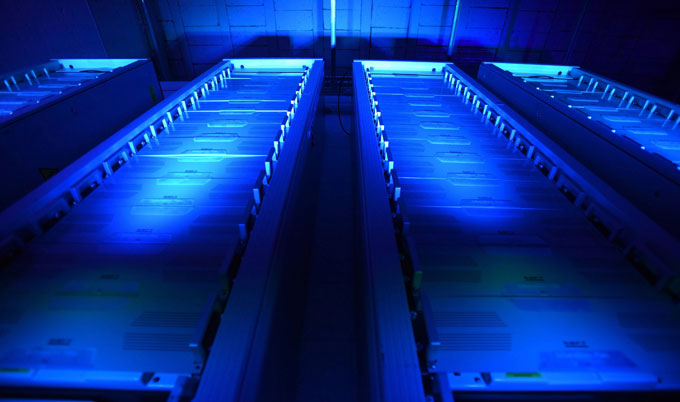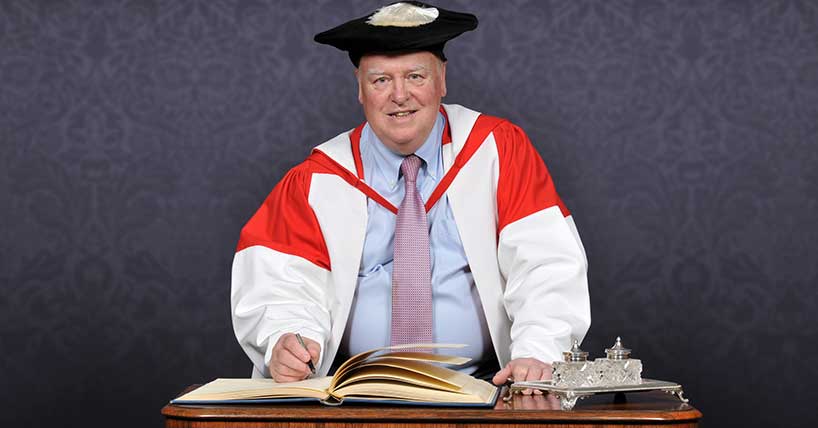Faraday Institution projects
Newcastle researchers to deliver vital battery projects
Published on: 30 March 2023
Newcastle University will be involved in four Faraday Institution battery research projects aimed at delivering commercial impact.
The Faraday Institution, a leader in energy storage research, has announced a £29 million investment in six key battery research projects aimed at delivering commercial impact. These existing projects on extending battery life, battery modelling, recycling and reuse, safety, solid-state batteries, and lithium-sulfur batteries, have been reshaped to focus on the areas with the greatest potential for success.
The funding for these projects comes from the Faraday Battery Challenge, delivered by Innovate UK for UK Research and Innovation.

Leading the way battery innovation
Four of the projects involve Newcastle University scientists - Recycling and Reuse (ReLiB), Extending battery life, Battery Safety (SafeBatt) and Solid-state Batteries (SOLBAT).
Recycling and Reuse (ReLiB)
The ReLiB project will develop, improve and scale recycling technologies and transition them to industry. The project is developing cutting-edge diagnostic and decision-making methodologies (linking to battery passports) to optimise and automate pack handling logistics that will enable autonomous decision making at end of first life to recycle or reuse in a second-life application such as on the grid. The lead researcher at Newcastle from the ReLiB project is Dr Simon Lambert.
Professor Mohamed Mamlouk and Dr Jie Zhang, of Newcastle University’s School of Engineering, will lead research into data driven decision making process for the recovery and recycling of lithium-ion batteries.
Professor Mamlouk said: “We are excited to join the ReLiB team and look forward to work together to support the improvement of the Li-ion battery reuse and recycling chains. Informed by in-use and in-line testing data, we will use our electrochemical engineering and machine learning expertise, to build a real-time decision-making tool to advise users and recyclers on how to maximise value and security of supply of raw materials through recovery and reuse of valuable materials from used batteries.”
Extending battery life
The Faraday Institution’s Degradation project, a centre of excellence in understanding degradation mechanisms in lithium nickel manganese cobalt oxide NMC811-graphite batteries, is expanding to investigate other systems of industrial interest. Researchers will apply their knowledge and new characterisation techniques to investigate the degradation of systems comprising silicon-rich composites and those using anode-free architectures.
Dr James Dawson will use advanced computational chemistry methods with particular focus on relating cell lifetime and performance to the electrolyte composition.
Battery Safety (SafeBatt)
SafeBatt is investigating the science behind cell and battery failure using advanced instrumentation, imaging and high-speed techniques to characterise failure modes and investigate the interplay between cell ageing, degradation and safety. Cell-to-cell failure propagation is being studied and detection methods and mitigation strategies to prevent thermal runaway and propagation are being developed and demonstrated. A model that can predict thermal runaway and simulates the external flow of gas, heat and ejecta during failure will be developed, informing the design of safer battery systems.
Professor Paul Christensen, Professor of Pure and Applied Electrochemistry, is the lead researcher from the project at Newcastle University. He said: “Lithium-ion batteries are amazing devices and essential for the decarbonisation agenda: for example, they are ideal for storing the intermittent energy from renewable generators. However, their penetration into all levels of our society has, in my view, far outstripped our knowledge of their associated risks and hazards. Our mission is to research thermal runaway and thermal propagation in large lithium-ion batteries in order to educate, guide and inform all stakeholders in their abuse and safe use, and how to deal with them when they fail.”
SOLBAT
SOLBAT will continue to focus on developing a deep understanding of the materials properties and mechanisms behind the premature short-circuiting and failure of solid-state batteries, a crucial step towards avoiding such events and realising the commercial potential of this technology. The project will focus on the key areas of the solid-state system, namely the anode, cathode and electrolyte.
Dr James Dawson is also involved in the SOLBAT project. He will conduct first-principles calculations of transport of lithium ions at grain boundaries to better understand how the process affects battery performance and degradation.
Dr Dawson, NU Academic Track Fellow (NUAcT), School of Natural and Environmental Sciences, said: "I am delighted to be joining the Faraday Institution as a co-investigator of the SOLBAT and Degradation projects.
“In collaboration with our SOLBAT partners, we will improve the current understanding of how the microstructural features of solid electrolytes can govern the overall performance of solid-state batteries based on first-principles simulations.
“As part of the Degradation team, we will investigate solid electrolyte interphase formation through state-of-the-art atomistic models and utilise machine learning to identify optimal electrolyte compositions for anode-free batteries. Computational modelling plays an essential role in the development of new materials and technologies for energy storage and it is fantastic to see this continually acknowledged by the Faraday Institution."
Newcastle University’s Professor Colin Herron is the Faraday Institution North East Lead. He said: “The North East attracted international attention with the opening of the first Li ion battery plant. Newcastle University has had a long association with that plant and the Nissan battery facility. The Faraday Institution, recognising the region’s growing importance, opened their only regional office in Newcastle University. It is very pleasing, with these announcements, that research capability of Newcastle University and individuals within the university is now being recognised nationally.”
With over 500 researchers from 27 universities and 85+ industry partners, the Faraday Institution continues to drive innovation in energy storage technologies that will transform the UK energy landscape from transportation to the grid.
As part of this project refocusing and its ongoing efforts to drive impact in energy storage research, the Faraday Institution recently issued an open call for short, costed proposals for new research topics with tightly defined scopes that complement its core research projects. The list of successful applicants is found here, and new research areas have been integrated into the projects. The round was highly competitive with 62 proposals submitted.
James Gaade, Research Programme Director, The Faraday Institution, said: “We congratulate the co-investigators who were successful in bidding in the competitive process. They are from 10 universities, three of which - Cranfield, Bristol and King’s College London - are new to Faraday Institution core projects. We particularly congratulate Newcastle University who will lead three new work areas in the SOLBAT, ReLiB and Degradation projects.”
Business and Trade Minister Nusrat Ghani said: “Growing the battery industry is vital to positioning the UK as the best location in the world to manufacture electric vehicles.
“This funding will help businesses become more innovative and productive, helping to create more skilled, high-wage jobs across the UK, future-proofing our economy and supporting our ambition towards a cleaner, greener future.”
Professor Pam Thomas, CEO, Faraday Institution, commented: “The Faraday Institution is committed to identifying and investing in the most promising and impactful battery research initiatives. This project refocusing is an important part of that process, and allows us to direct even more effort towards those areas of research that offer the maximum potential of delivering societal, environmental, and commercial impact.”
Research in these six areas will progress over the next two years to 31 March 2025.
Adapted with thanks from the Faraday Institution.



